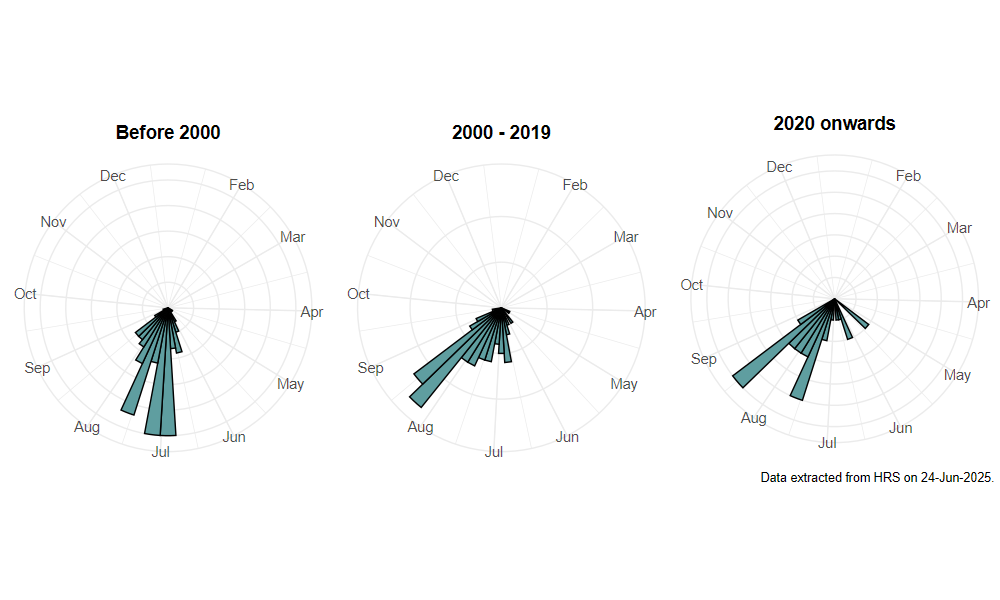Meligramma guttatum (Fallén, 1817)
Identification
Identification difficulty = 4. ![]()
![]() according to Ball & Morris, 20241
according to Ball & Morris, 20241
Synonymy
Syrphus guttatus Fallén in Coe(1953)2, Melangyna guttata (Fallén) in Stubbs & Falk (1983)3.
Biology
This is a woodland species that occurs on wooded riverbanks, wet woodland and carr and in northern Sycamore Acer pseudoplatanus woods. The larva is predaceous upon aphids and have been recorded feeding upon the aphid Drepanosiphum platanoides on Sycamore. The adults are flower visitors and have been recorded at Hogweed Heracleum sphondylium.
Flight period
The following plots show the number of unique records per week excluding those reported to be of immature stages.

Status
Lower Risk (Nationally scarce) - Ball & Morris, 20144. Notable - Falk, 19915. Rare (RDB3) - Shirt, 19876.
Distribution
This is a widely distributed species across England, Scotland and Wales, but one that appears to be somewhat more frequent in northern England. Post-1990 records include East Cornwall, North and South Somerset, Carmarthenshire, Glamorganshire, Meirionnydd, Derbyshire, South Yorkshire, Westmorland, Ayrshire, North Ebudes and East Invernesshire.

Trends
The following plots show the Frescalo TFactor vs year and a map of the rescaled frequency (all records) for the species.
-
Ball, S., & Morris, R. (2024). Hoverflies of Britain and Ireland. WILDGuides (3rd ed.). Oxford: Princeton University Press. ↩
-
Coe, R. (1953). Diptera: Syrphidae. Handbooks for the Identification of British Insects, 10(1), 1–98. ↩
-
Stubbs, A., & Falk, S. (1983). British Hoverflies: An Illustrated Identification Guide (1st ed.). Reading: BENHS. ↩
-
Ball, S., & Morris, R. (2014). A review of the scarce and threatened flies of Great Britain. Part 6: Syrphidae. ( No. 9). Species status (pp. 1–130). Peterborough: JNCC. ↩
-
Falk, S. (1991). A review of the scarce and threatened flies of Great Britain. ( No. 39). Research and Survey in Nature Conservation (pp. 1–194). Peterborough: NCC. ↩
-
Shirt, D. (Ed.). (1987). Red Data Books: 2. Insects. Peterborough: NCC. ↩